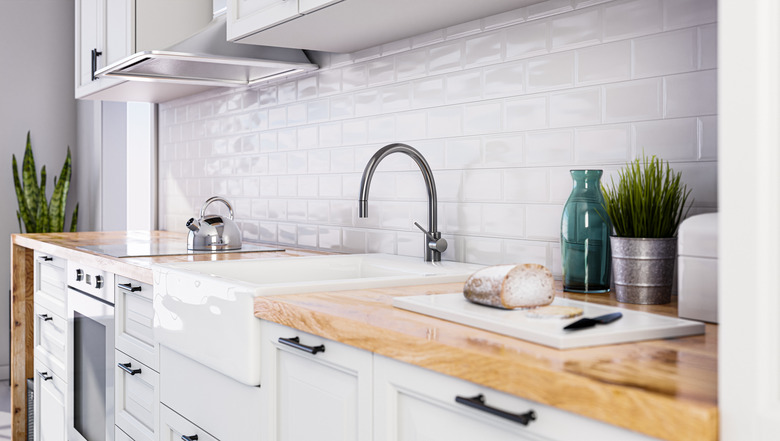What Is A Vacuum Breaker In A Faucet?
We may receive a commission on purchases made from links.
Protecting your potable water supply keeps your family safe, but that water may be at risk from a source you didn't even consider. Outside spigots, utility sinks and other spots around homes and businesses pose the risk of contaminated water flowing back into the plumbing system. A vacuum breaker is a simple plumbing fixture that can prevent that potential contamination to increase your water safety.
Tip
A vacuum breaker in a faucet is a device to prevent contaminated water from flowing back into your plumbing pipes. It helps keep your water supply safe.
What Is a Vacuum Breaker?
What Is a Vacuum Breaker?
A vacuum breaker is one of several devices designed to prevent water that leaves the faucet from flowing back into the plumbing system. Vacuum breakers do this by preventing backflow and back siphoning from occurring. Any place where water is supplied for any use other than drinking water needs a vacuum breaker installed. State and federal laws require vacuum breakers be installed on outside spigots, commercial dishwashing machines, mop-sink faucets, and dish sink sprayer hose spigots.
Understanding Backflow Issues
Understanding Backflow Issues
Water supply lines usually maintain enough pressure to prevent water from flowing back into the pipe. But if a pipe bursts or is disconnected for some reason, that pressure can drop and allow contaminated water to flow back in and mix with the clean water. Any faucet or spigot not connected to a vacuum breaker can allow water to seep back into the spigot if the pressure on the supply side decreases. Contaminants from ground water and microorganisms could contaminate the potable water.
Understanding Back Siphonage
Understanding Back Siphonage
Back siphonage can occur when there is extreme demand on one part of the water supply, which can cause negative pressure in other parts of the system. For example, a facility might have two mop sink areas and a dishwashing machine. None of the spigots are protected by a vacuum breaker and it's a busy day in the dish room.
The dishwasher is being used a lot, and as a result, there's negative pressure on the pipes supplying water to the mop sinks. The negative pressure causes the hose lying in the mop sink to pull the dirty water in the bottom of the mop sink back into the hose where it contaminates the fresh water. A sink vacuum breaker prevents this from happening.
Hose Bibb Vacuum Breaker
Hose Bibb Vacuum Breaker
A hose bibb vacuum breaker is a threaded device that screws onto the spigot mouth. It prevents water from flowing backward into your pipe with a spring loaded check valve. This valve opens and closes based on the water pressure.
When the water flows, the pressure of the water pushes open the check valve in the hose bib backflow preventer. When you turn off the water, the pressure against the spring on the valve decreases, the valve closes, and air flows into the space around the valve. The air pressure and the spring keep water from seeping back into the spigot from the outside.
Atmospheric Vacuum Breaker
Atmospheric Vacuum Breaker
Atmospheric vacuum breakers are the simplest and least expensive of devices intended to keep water from flowing back into the water lines. They operate by using the outside air pressure to close a check valve. When you turn on the water, the water pressure pushes open the water valve. When the water is off, the air pressure pushes down on the valve and blocks the pipe.
Atmospheric vacuum breakers must be installed at least 6 inches above the spigot with piping from the vacuum breaker to discharge the water. The water flows through the breaker and into the spray hose. This type of vacuum breaker is often installed on commercial dish sink hose sprayers and on water supply lines for commercial dishwashers.
Pressure Type Vacuum Breaker
Pressure Type Vacuum Breaker
The pressure type vacuum breaker is a modification of the atmospheric vacuum breaker. It's intended for use in situations where the water supply is under pressure or the valves are downstream of the breaker. The pressure type vacuum breaker contains a spring loaded poppet and two test cocks. Gauges attached to the test cocks allow the pressure to be constantly monitored.
